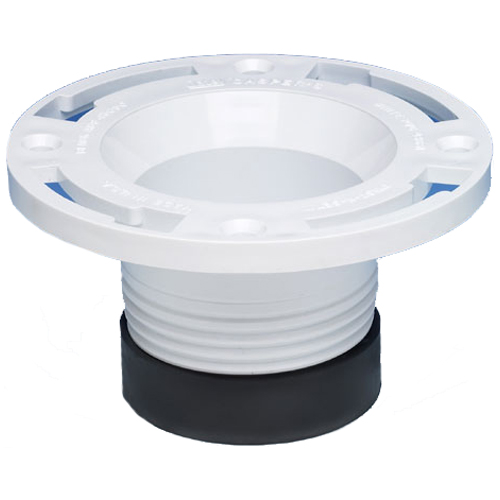Nearly everybody has his or her own rationale involving How to Replace a Toilet Flange.
:max_bytes(150000):strip_icc()/installing-a-toilet-flange-extension-2719027-04-6d718f1d094b4fae9074e035c6bf3104.jpg)
Intro:
Understanding the Importance of a Toilet Flange:
In the world of plumbing, the often-overlooked bathroom flange plays a critical duty in ensuring the seamless procedure of your washroom fixtures. Acting as an important port in between your bathroom and the underlying drain, the commode flange acts as the unhonored hero of your plumbing system. Without this sturdy element, your toilet would be prone to instability and leaks, potentially causing pricey repairs and hassle. Therefore, comprehending the importance of a correctly installed and preserved commode flange is critical for any property owner embarking on plumbing projects or addressing fixing needs.
Why Proper Installation and Maintenance Matter:
Proper installment and precise maintenance of the commode flange are important for securing the honesty of your plumbing framework. A carefully mounted flange not only supports your toilet firmly in place yet additionally forms a bulletproof seal, fending off the perils of leakages and smells. By welcoming a proactive method to flange upkeep, you can alleviate the risk of turbulent plumbing issues and protect the tranquillity of your family environment. Throughout this informative overview, we'll unwind the ins and outs of commode flange installment and repair, encouraging you with the understanding and proficiency to browse these vital tasks expertly.
Best Practices When Installing a Toilet Flange:
Ensuring a smooth bathroom flange installment needs adherence to a set of ideal practices that ensure resilience and capability. Begin by carefully analyzing your tools and materials, ensuring you have the required devices for the job in advance. Selecting the proper flange material, whether PVC, ABS, or cast iron, is extremely important, as it determines the durability and performance of your plumbing fixture. In addition, examining existing plumbing problems, such as checking for damages or rust, is important for preemptively addressing potential difficulties and making sure a smooth setup process. By taking on these primary steps, you set a strong foundation for an effective commode flange setup, minimising the chance of future concerns and assisting in long-term upkeep.
When sufficiently prepared, wage the cautious removal of the old flange, complying with a methodical approach to stay clear of triggering damage to bordering parts. Employ methods tailored to address persistent or rusted flanges, guaranteeing their swift and risk-free removal without compromising the honesty of the bordering plumbing facilities. With the old flange got rid of, thoroughly install the brand-new substitute flange, choosing one that fits snugly and safely right into place. Appropriately safeguarding the flange to the floor utilizing screws or adhesive is critical, as it ensures security and prevents future leakages. By sticking to these ideal techniques during the setup procedure, you lay the groundwork for a durable and reputable bathroom flange configuration that endures the test of time.
Mounting a New Toilet Flange:
When installing a brand-new bathroom flange, the first step is to choose the ideal replacement for your plumbing configuration. Consider elements such as the material of the flange, with choices including PVC, ABS, or cast iron. PVC flanges are understood for their cost and resistance to deterioration, making them a preferred choice for DIY enthusiasts. Abdominal muscle flanges offer comparable advantages to PVC but boast included resilience, making them appropriate for high-traffic areas or commercial setups. Cast iron flanges, renowned for their stamina and durability, are optimal for setups where longevity is critical. Additionally, make sure that the replacement flange is appropriately sized and fits snugly right into location to create a water tight seal and avoid leaks.
Safeguarding the Flange to the Floor:
Once you've picked the best substitute flange, it's essential to protect it properly to the floor to guarantee security and prevent future issues. Begin by positioning and straightening the flange appropriately over the drain, guaranteeing that it rests flush with the flooring surface. Depending on the type of flange and your particular setup preferences, you can protect the flange to the floor utilizing screws or glue. If making use of screws, make certain to make use of corrosion-resistant alternatives to avoid rusting gradually. Additionally, adhesive can offer a secure bond in between the flange and the floor, guaranteeing a durable and trustworthy installation. By complying with these actions and taking the essential safety measures, you can install a new bathroom flange with self-confidence, guaranteeing a durable and leak-free plumbing fixture.
Finest Practices When Repairing a Broken Flange:
Repairing a broken toilet flange needs thorough interest to detail and adherence to ideal techniques to make sure a lasting option. Begin by thoroughly examining the level of the damage and identifying the underlying cause, whether it be rust, splits, or imbalance. This evaluation will direct your repair service method, enabling you to choose one of the most proper methods and materials for restoring the flange to its optimal condition. In addition, take into consideration the bordering plumbing facilities and floor stability to address any potential adding elements and avoid future issues from arising. By performing a detailed assessment and analysis, you lay the groundwork for an efficient and enduring repair work procedure that solves the source of the issue.
With a clear understanding of the flange's condition and the variables influencing its damage, proceed with the fixing process using accuracy and care. Depending upon the severity of the damages, you might opt for fixing methods such as epoxy putty, repair work flange sets, or partial flange substitutes. Make certain that the chosen repair method successfully resolves the details concerns handy while maintaining the structural integrity and performance of the flange. Furthermore, take aggressive actions to enhance the repaired flange and stop future damages, such as using sealer or waterproofing products to protect against leakages and corrosion. By sticking to these finest techniques throughout the fixing process, you can restore your broken flange to optimal problem, ensuring the lasting reliability and efficiency of your plumbing system.
Kinds Of Toilet Flanges:
Recognizing the different kinds of commode flanges is vital for selecting one of the most suitable option for your plumbing requires. PVC, ABS, and cast iron are amongst the usual materials used in bathroom flange building and construction, each offering distinct advantages and considerations. PVC flanges, recognized for their price and rust resistance, are favoured for their convenience of installation and resilience. Abdominal muscle flanges, similar to PVC in regards to affordability and ease of setup, are treasured for their effectiveness and resistance to effects. On the other hand, cast iron flanges, renowned for their remarkable stamina and longevity, are typically liked for high-traffic locations or industrial settings where longevity is extremely important. By familiarising on your own with the features of each product, you can make an educated choice when picking a toilet flange that lines up with your specific demands and preferences.
Along with product factors to consider, bathroom flanges also can be found in different design and styles to fit different plumbing arrangements and installation preferences. Offset flanges, as an example, are designed to fit commodes installed on floors that are uneven or where the waste pipe lies off-centre. In a similar way, repair service flanges, likewise called repair rings or spacer rings, are utilized to resolve problems such as cracked or broken flanges without the need for comprehensive plumbing adjustments. Additionally, adjustable flanges provide versatility in positioning, allowing for specific placement and fit during installation. By discovering the varied range of commode flange kinds and designs readily available, you can select the option that ideal fits your plumbing configuration and installation requirements, ensuring a smooth and dependable remedy for your restroom components.
Specialty Options:
Along with traditional bathroom flanges, there are specialized options offered to address details plumbing challenges and setup choices. One such alternative is the offset flange, which is developed to fit commodes set up on floors that are uneven or where the drain is located off-centre. Offset flanges include an one-of-a-kind design that permits the commode to be positioned at a small angle, making up for uneven flooring or misaligned plumbing connections. This innovative remedy makes sure a safe and secure and steady installation, eliminating the demand for costly and time-consuming flooring progressing or pipe relocation. By including a countered flange right into your plumbing arrangement, you can get over typical setup obstacles and attain a professional-quality result with ease.
An additional specialty alternative worth thinking about is the repair flange, additionally known as a fixing ring or spacer ring. Repair flanges are specifically created to address problems such as fractured or broken toilet flanges without the requirement for considerable plumbing modifications. These flexible elements can be set up straight over the existing flange, offering a durable and reputable base for safeguarding the toilet in place. Repair flanges been available in different dimensions and configurations to accommodate different flange sizes and setup demands, making them a practical and cost-efficient service for solving flange-related troubles. Whether you're managing a minor flange repair work or a more intricate plumbing problem, incorporating specialty alternatives like balanced out and repair flanges can enhance the installation procedure and ensure durable performance for your washroom components.
Final thought:
Finally, mastering the art of bathroom flange installment and repair work is necessary for maintaining a functional and leak-free plumbing system in your home. By comprehending the significance of an effectively installed flange and adhering to finest methods throughout the procedure, you can make certain the long life and reliability of your restroom fixtures. Whether you're selecting the best type of flange, conducting repairs, or exploring specialized alternatives, interest to detail and precise execution are crucial. Routine upkeep and positive troubleshooting can help avoid costly plumbing concerns and protect the serenity of your house setting. Armed with the knowledge and skills gotten from this detailed guide, you can tackle toilet flange setup and repair service with self-confidence, empowering you to protect your plumbing system for years to come.
How to Install a Toilet Flange on A Concrete Floor
Preparation in Installing or Replacing a Toilet Flange
Gloves Screwdriver Hacksaw or a power saw Measuring tape Putty knife Hammer New screws (if needed) New T-bolts (if needed) New wax ring (if needed) Remove the Old Flange
The first step is to remove the old flange. You can unscrew the bolts that hold the flange in place. If the bolts are rusted or stuck, you may need a grinder to get them out.
Once the bolts are out, you should be able to pull the flange out if needed. You can try prying it out with a screwdriver or a putty knife if it’s stuck.
Scrape off the Old Wax Ring
Now that the flange is out, you need to remove the old wax ring. You can do this by scraping it off with a putty knife. Be sure to get all of the wax off so that the new wax ring will adhere properly.
Clean the Area around the Drain
Once the wax ring is removed, you need to clean the area around the drain. This will ensure that the new flange is attached appropriately.
You can use a brush and some soapy water to clean the area. If there is any rust or build-up, you may need to use a power drill with a wire brush attachment to remove it.
Measure the Size of the Flange
Now that the area is clean, you need to measure the size of the flange. This will ensure that you get the correct size flange for your toilet.
Most flanges are either 3 or 4 inches in diameter. To measure the diameter, you will need to use a tape measure.
Select the Correct Size Flange
Once you know the diameter of the flange, you need to select the correct size. If you’re not sure which size to get, you can always ask a salesperson at the hardware store for help.
One way to ensure that you get the right size flange is to take the old one to the store. Just make sure that the old flange is clean and free of any wax or build-up.
Set the Toilet Flange in Place
The next step is to set the new flange in place. You will need to align the flange with the drain to line up the bolt holes. It would help if you also considered the distance from the wall.
Most flanges are designed to be installed about 12 inches from the wall to the center of the flange. However, you may need to adjust this based on the size of your toilet. Our favorite flanges to install are twist in flanges which you can pick up from your local Home Depot. You can check them out here.
Drill Holes for the Screws
Once the flange is in place, you need to drill holes for the screws in the concrete. You will need to use a concrete drill bit that is slightly smaller than the screws.
The number of screws you need will depend on the size of the flange. Most flanges require four screws to hold them in place.
Install the Screws
Once the holes are drilled, you can install the screws. You will need to use a screwdriver to tighten them in place. Be sure not to overtighten the screws as this can damage the flange and may cause the toilet to leak from the base.
Place the New Wax Ring on the Flange
Now that the flange is installed, you need to place the wax ring on top. The ring should fit snugly around the flange.
If you’re not sure which size wax ring to get, you can always ask a salesperson at the hardware store for help.
Set the Toilet Bowl in Place
Now that the wax ring is in place, you can set the toilet bowl in place. You will need to align the bolt holes with the holes on the flange. Once the bowl is in place, you can start to tighten the bolts.
Connect the Water Supply Line
The final step is to connect the water supply line to the toilet. You will need to screw the line into the fitting on the bottom of the tank.
Once the line is tight, you can turn on the water supply and flush the toilet to check for leaks. If there are no leaks, then you’re done! You’ve successfully installed a toilet flange.
If you want to know more about the entire toilet installation process, from removing to installing a new toilet, you can check out our article about How to Remove a Toilet and Replace It With a New One.
Conclusion
Installing a toilet flange is a relatively easy do-it-yourself project. Just be sure to measure the flange and select the correct size. Also, you should remember is that the screws must be hand tight only; overtightening them may cause the flange to break.
However, if you have doubts about your plumbing skills, it’s always best to call a professional plumber to help you install your toilet flange or even your entire toilet. This can save you time, money, and headaches because they know how to do it quickly and efficiently.
If you live in Lower Mainland copyright and need a trustworthy and experienced plumber to install your toilet flange, Your Guy Plumbing is here to assist you 24/7. We offer toilet installation and repair, as well as other plumbing services to meet all of your needs.

Do you enjoy reading about How to Replace a Toilet Flange? Write a short review directly below. We would be delighted to find out your thinking about this article. We hope to see you back again later on. Loved our piece of writing? Please quickly share it. Let someone else check it out. Thank-you for going through it.
About This
 Kirk Cameron Then & Now!
Kirk Cameron Then & Now! Michael J. Fox Then & Now!
Michael J. Fox Then & Now! Raquel Welch Then & Now!
Raquel Welch Then & Now! Lacey Chabert Then & Now!
Lacey Chabert Then & Now! Robin McGraw Then & Now!
Robin McGraw Then & Now!